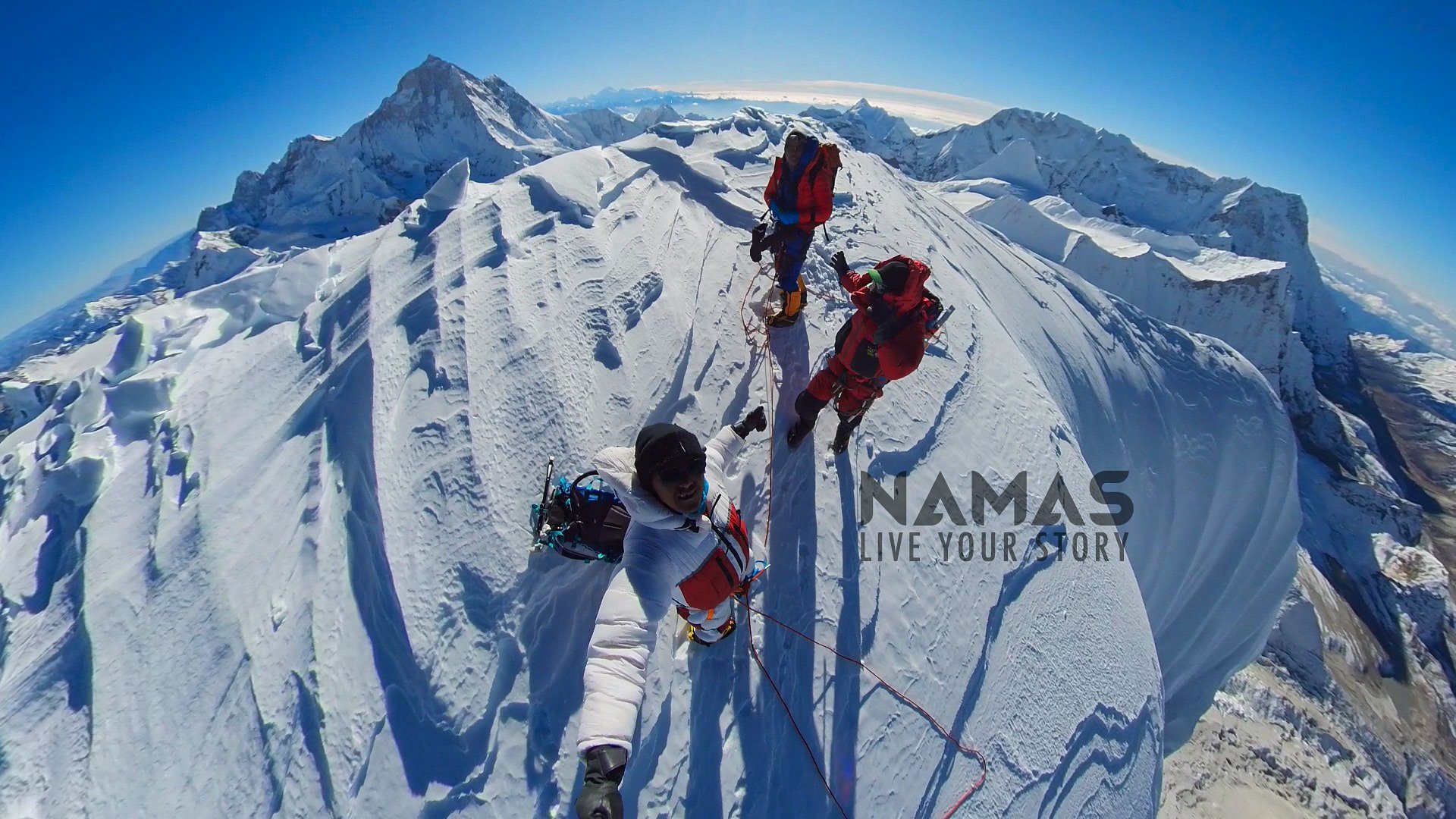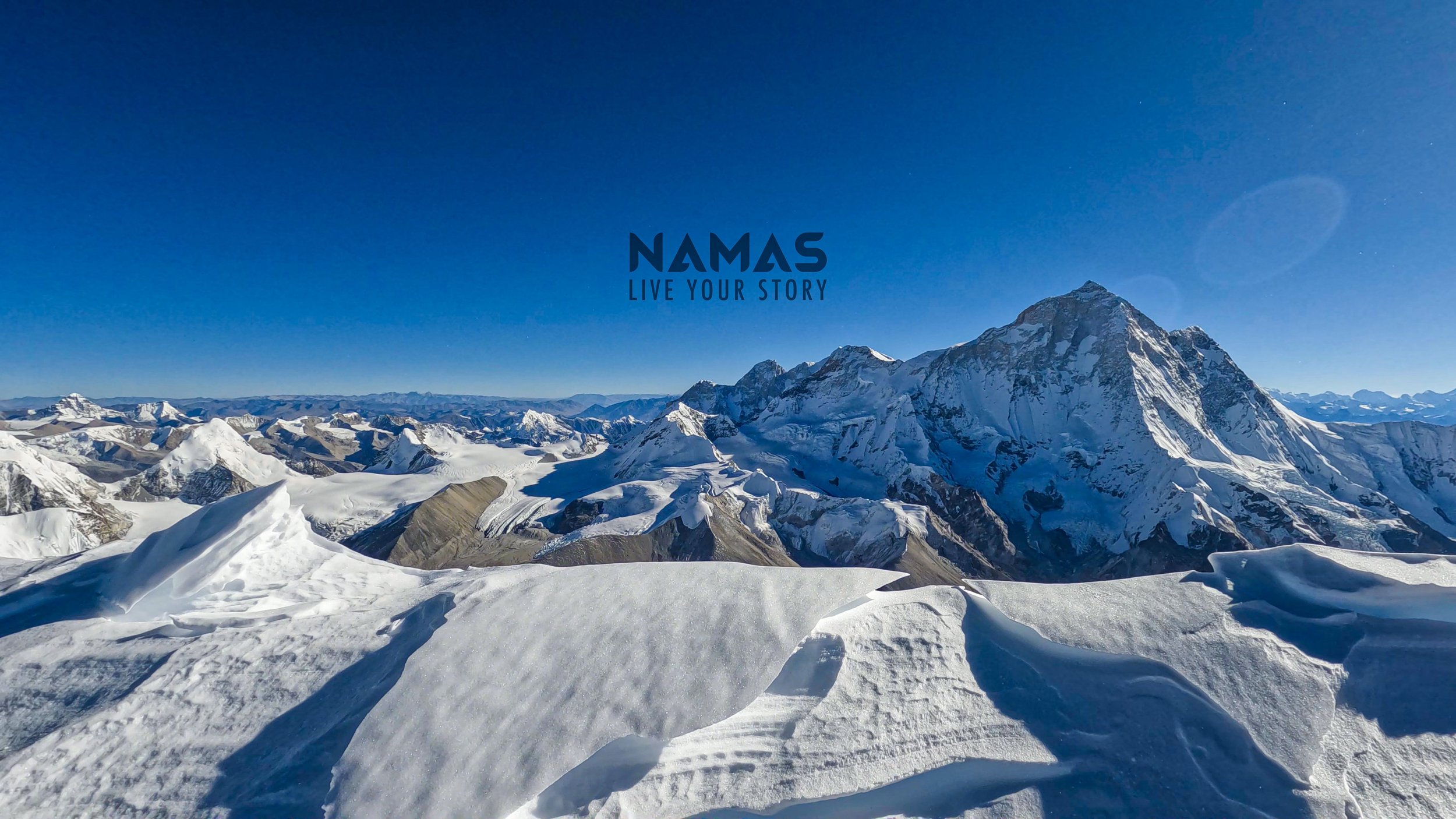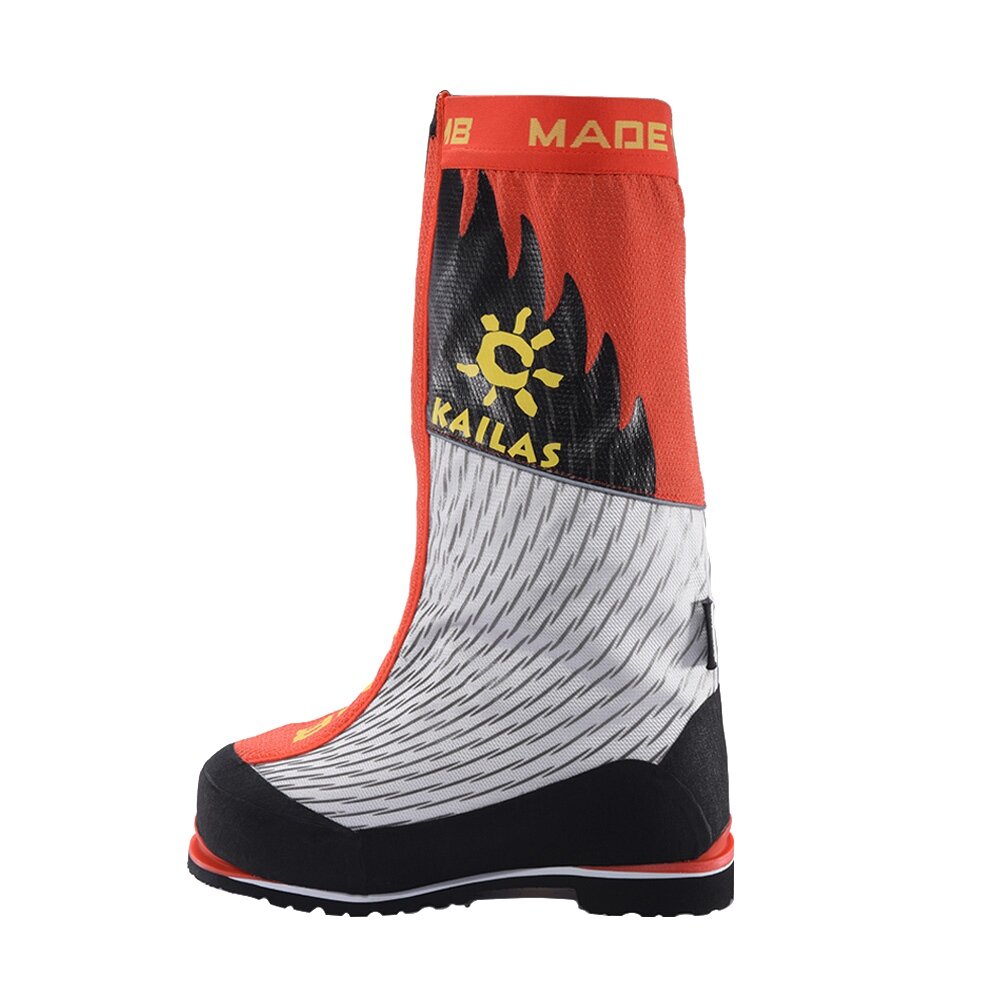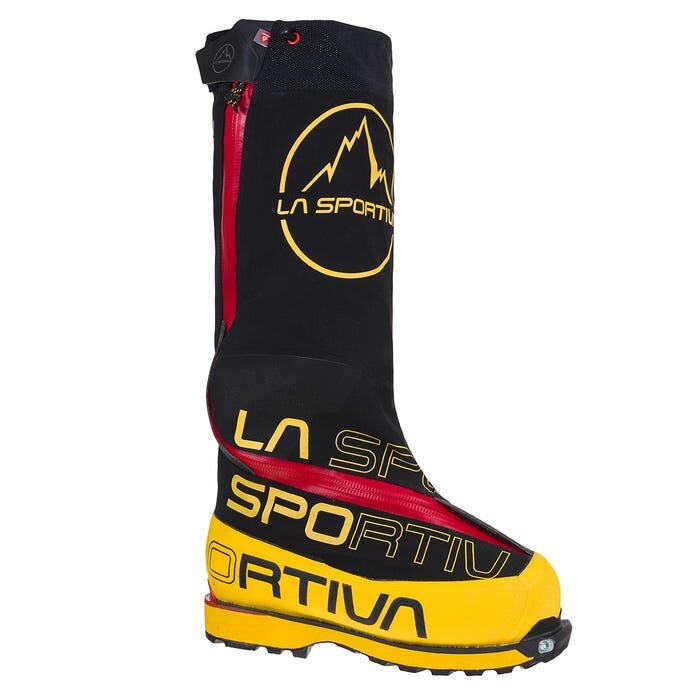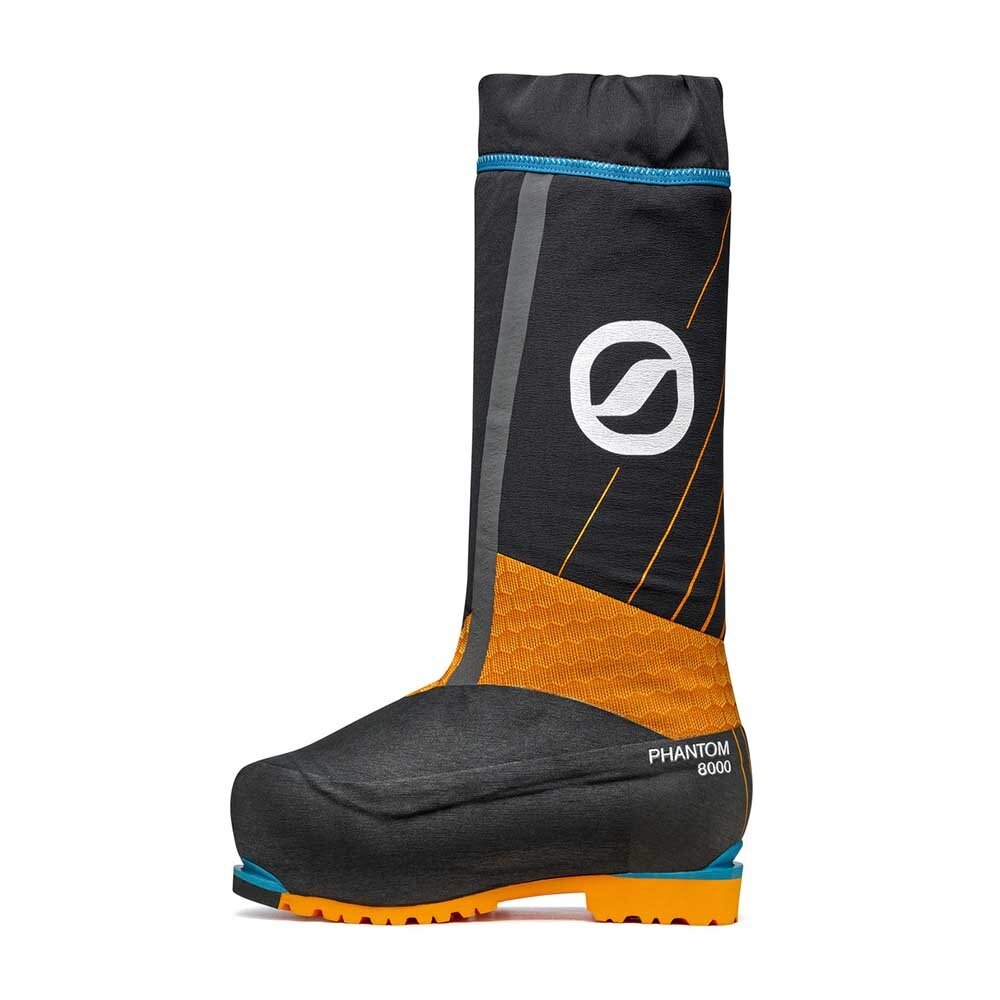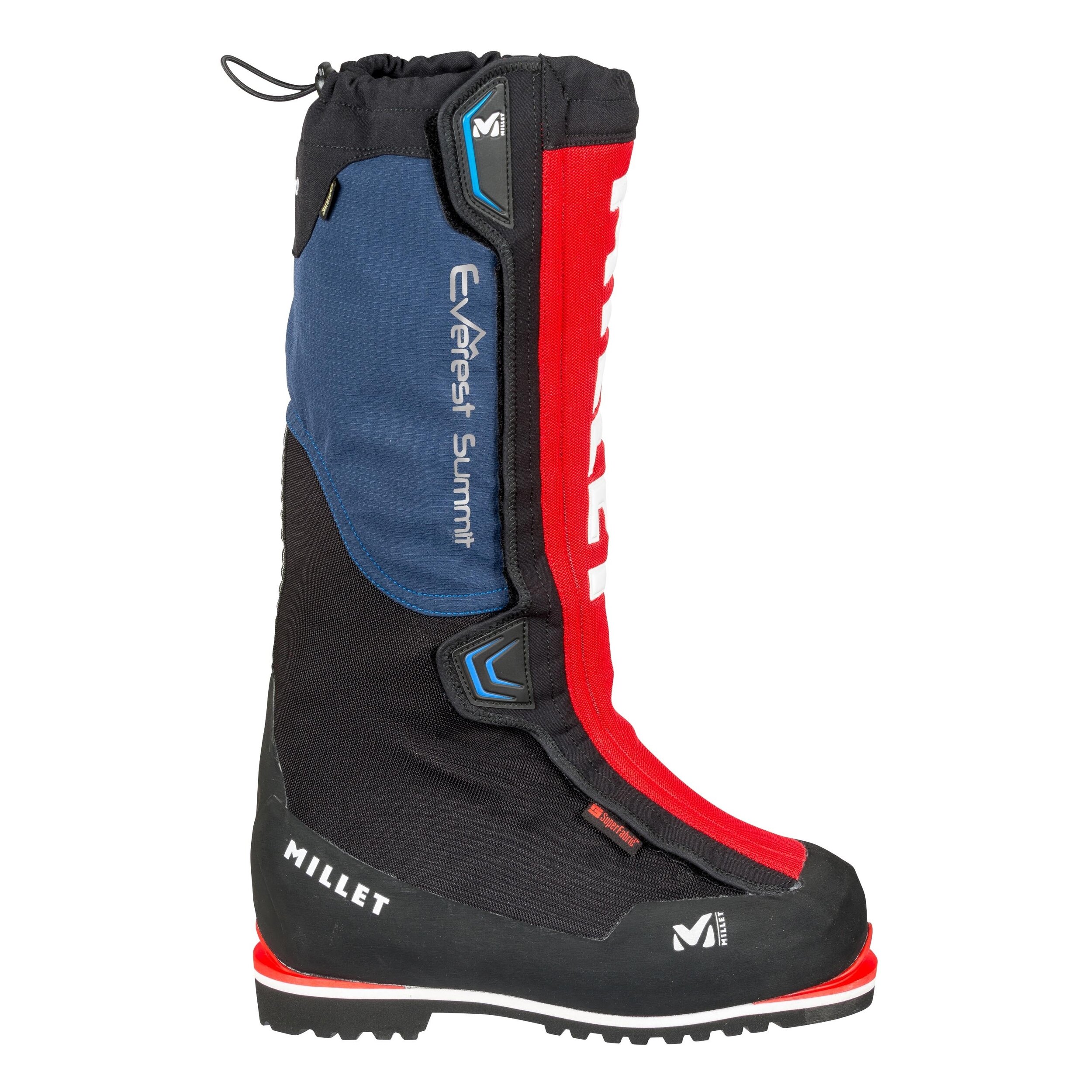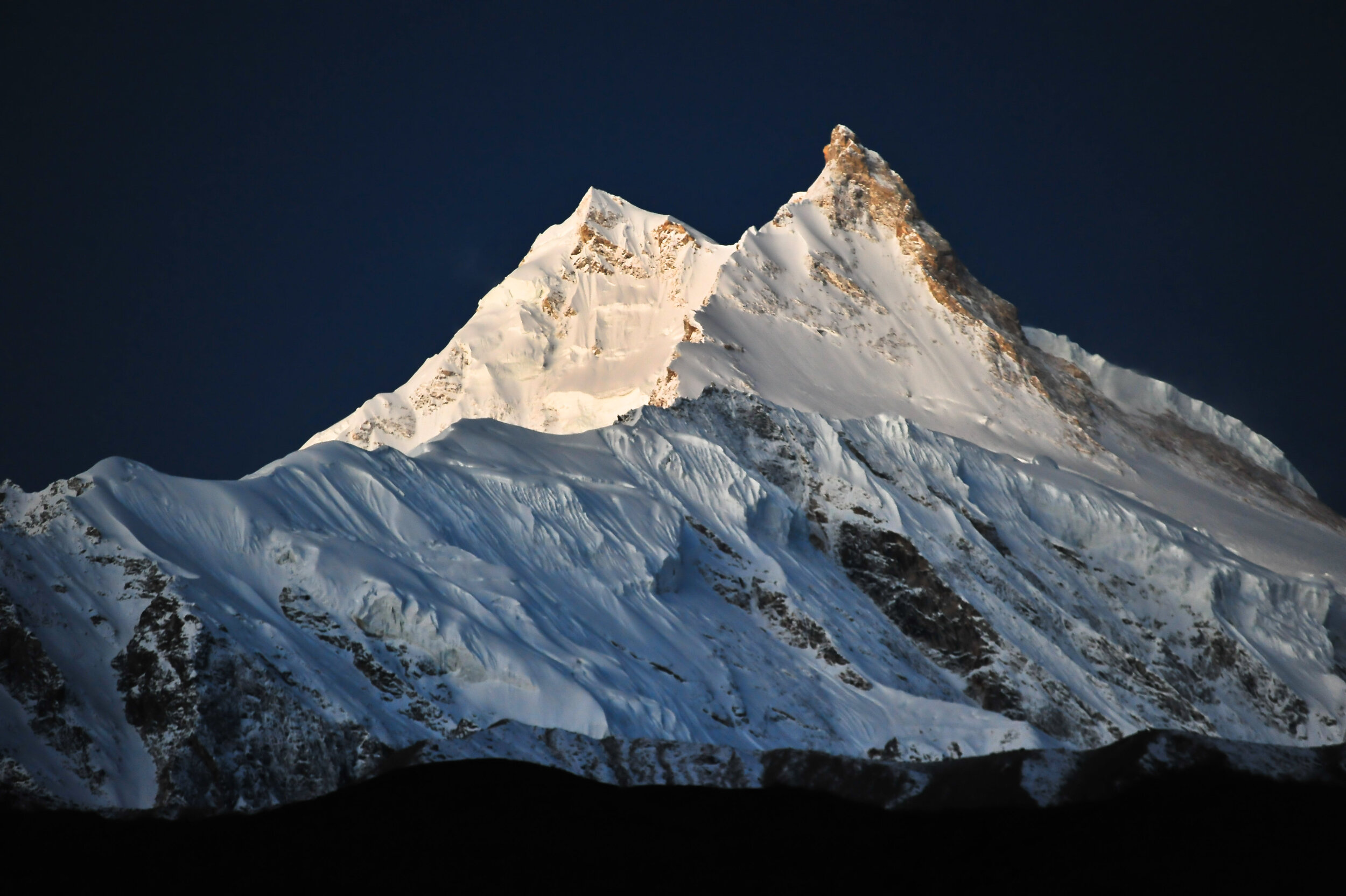Visual Journey of Baruntse Expedition - Namas Adventure
The experience of climbing Baruntse is one of the most thrilling climbs in the Makalu Barun Valley. Not only is the climb beautiful and raw but it is physically challenging. Land in the buzzing historic city of Kathmandu following then to the famous Lukla airport. From there trek through the Khumbu region to enter into thick jungles of the Barun Makalu region to climb the icy summits of Mera. After acclimatizing well at Mera, the following adventure leads to the summit of Baruntse.
Climbers pass through several beautiful villages and as we reach Mera BC our alpine camping begins. Once climbers reach Baruntse base camp we rest there and prepare for our Baruntse Summit. The climb demands an intermediate level of skill and past experience and our team members are made up of highly experienced climbers. Expect a little bit of everything on the route – scrambling on the rock, climbing on steep ice/snow, and multiple camps on the mountain. Follow along as we describe the entire journey in images, as we take the beautiful yet challenging journey up to the summit of Baruntse 7129M.
Boudhanath, Kathmandu
Arrive in the vibrant and beautiful city of Kathmandu. Our team picks you up from the airport and takes you to your hotel. There you rest and can explore the cities vibrant culture and traditions. Boudhanath (Buddhist shrine) is one of the places where you can explore.
Tenzing - Hillary Airport, Lukla, Khumbu, Nepal
Expect to reach early at the airport as most Lukla flights are in the morning. Once we arrive in Lukla (40 Min flight) our expedition starts. Porters load their packs meanwhile our climbers get their breakfast and excitement begins.
Trek through the beautiful villages passing through lush jungles and rugged trails. Climbers will come across the jungles of Rhododendron and other wild trees. Also, lots of mules and Sherpa porters along the first two days of the trek.
Trek through beautiful villages and stay in local tea houses
Monasteries and other cultural sites are a perfect detours to explore.
Once you enter Makalu Valley the mountains open them selves and climbers will be walking very close surrounded all around by the Himalayas.
Climbers can expect to see a lot of high and dry granite walls and Himalayas all around when trekking to higher tea houses and camps.
As soon as we enter Makalu Barun Nation park climbers will be able to see moraines and glaciers flowing through the Himalayas. Mera-la Glacier can be seen in the far distance just below the clouds.
Climbers and porters climbing Mera - La glacier, ascending higher to Mera high camp. From Mera-la the real alpine mountaineering begins.
Mera High Camp 5460M is one of the most interesting high camps during your expedition. We camp here for a night before making our early summit push to Mera Peak summit.
Mera Summit 6476M. This is one of the most spectacular and accessible climbs for anyone with even no climbing experience before. Mera summit offers a 360 panoramic view of surrounding Himalayan peaks. Everest, Cho-Oyu, Makalu, Lhotse, Kanchenjunga, Ama Dablam, Baruntse, and other uncountable amounts of 6000M and 7000M peaks are visible on a clear summit day. A visual galore to satisfy your adventure soul.
Heading towards Seto Pokhari
After Mera Peak summit, the journey heads further deep into Hunku valley taking us through base of Chamlang and other Himalayan peaks finally arriving at Baruntse base camp 5460M.
Namas team, Baruntse base camp.
Puja ceremony at Baruntse Base camp. After a day of rest, puja is organised seeking permission from the mountain god for safe passage when climbing the mountains. A monk recites and performs the rituals meanwhile all the climbers take care in this ceremony. Spirits are high and blessings are offered and everyone is to be ready for their final part of the expedition. Mentally, physically and spiritually.
West Col to Camp 1 (6100M) is one of the challenging objectives of the expedition. Once climbers leave from base camp, it takes about 2 hours to reach the crampon point. All expedition gears are then worn and after another 45 min hike on icy surface climbers reach the base of 200M vertical wall. After 2-3 hours of jumaring climbers arrive on a flat Baruntse plateau. The lead guide then advises all the team where to set up the first camp.
Camp 2 (6400M)
Camp 2 (6400M) is a short 2 - 4 hour ascent about 400M - 500M high. Gradually going higher climbing team sets up the camp just below the Baruntse ridge.
Namas Guide Pega Sherpa can be seen descending/traversing the exposed Baruntse ridge at 7000M elevation.
Climbers leave early pushing for the Summit bid. Most of the climbing is done in the ridge section of Baruntse. This is the most challenging and dangerous section of the entire climb. After passing from three false summits finally, climbers will reach their ultimate destination. Expect a long and challenging climb.
Namas Baruntse team Pega, Nima and Chewang Sherpa successfully summited Baruntse 7129M and fixed the rope to the summit paving way for other team members.
🏔Makalu 8463M seen in the right hand side, Summit of Baruntse 7129M
Baruntse Summit 7129M. Lying just between the Great Lhotse wall and Makalu.
Fish eye view of Amphu Lhabtsa pass 5800M. Another ridge to Baruntse on the right. Everest and Lhotse in front of the climbers (between the clouds). This is the wall between Khumbu and Makalu/Huknu valley.
For more information on our Baruntse expedition or Baruntse Express expedition or any of our other international expeditions check out our website. (Call/WhatsApp) - +44 7446976060 or send us an email at bookings@namasadventure.com
Everything you need to know about Baruntse Peak climbing Expedition - Namas Adventure
Baruntse Peak 7129M is one of the accessible 7000M+ climbing peaks in Nepal. Sitting just between the world’s highest peak Mt.Everest and Makalu, this expedition will give you a glimpse and scale of the surrounding 8000M+ mountain peaks. Most climbing is done via the southeast ridge, semi-technical in technicality where the guiding team will have fixed the rope all the way to the summit. During climbing days, local Sherpa guides leaders from several teams colloborate together to set up the ropes. The climbing route is mostly on ice and snowy surfaces with an exposed section past 6600M+ all the way to the summit. This is definitely a must climb for any climbers seeking high-altitude climbing adventure or progress to 8000M+.
We have listed 10 useful pieces of information that will help you prepare for your Baruntse peak climbing expedition.
1. When is the best time to climb Baruntse Peak?
Baruntse Peak is best suited to climb during two climbing seasons. Autumn (September - November).
Note - Mount Baruntse is one of the remote climbing peaks with very few teams attempting the climb every year. You can be certain there won’t be many climbers or traffic during your expedition.
2. How much does the Baruntse Peak expedition cost? What does it include?
Please visit our Baruntse page for the updated yearly costs [link]. With a 1:1 guide-client ratio, our team is dedicated to ensuring your safety, successful summit, enriching cultural experiences, and overall enjoyment of the trip. As a company, we uphold our core values of responsibility, ethics, and sustainability in all our mountain adventure activities. With us, climbers can be confident that every detail is handled, allowing them to fully immerse themselves in their climbing holiday and the enjoyable experiences that await.
List of what’s included in your booking.
IFMGA or NNMGA certified Guide leader
Namas Branded merchandise (Down Jacket, Cap, Buff)
1:1 Sherpa/client ratio
Helicopter flight back to Lukla from Baruntse BC after returning to BC
Head chef and 2 kitchen helpers ( Helpers increase with the numbers in climbing team members )
Arrival hotel in Kathmandu
All trekking and climbing permits (Khumbu Region Permit and TIMS)
All internal-local transportation to and from the trekking trailhead
Expedition tents (2 or 1 person tents) Brands Salewa, Mountain Hardwear, Samaya equipment, Kailas
30 kgs personal weight
Freezed dried meals during camping days (Chicken, mushroom, vegan options etc)
Chocolate, energy bars, hydration pills, biscuits, canned foods, nuts
Burners and expedition equipment
Walkie talkie/ Satellite phone and GPS
Breakfast, Lunch, and Dinner on trek and expedition days.
Lodge accommodation during the trek
Porters per guest
Arrival pick up and departure
Internal flights
Basic First aid kit
Welcome/Farewell leave Dinner
3. What experience do climbers need to climb Baruntse? Are guides necessary for Baruntse Peak?
Experiences - Previous high altitude (3000M - 6000M+) alpine/mountaineering climbing experiences are absolutely necessary in order to climb Mount Baruntse or other 7000M+ peaks. It necessarily doesn’t have to be in Nepal but can be anywhere else in the world. Climbers need to have good knowledge and experience in hiking/climbing using crampons on snow, ice, and steep surfaces. Must be comfortable and proficient in using a fixed rope to climb on steep and exposed sections. Climbers should be familiar with the use of climbing gears, and basic rope techniques like tying safety knots, and abseiling when coming down from the mountains, and have the mental toughness to climb in cold and windy conditions.
Local Guides - By Nepalese law, when issuing permits for high altitude peaks above 6000M+ guides are a must. To issue a permit for Baruntse Peak climbing it will have to go through a registered local company. For intermediate experience level climbers, we highly suggest climbing the peak with guides. The usual climbing route does have a crevasse and there can be other danger points along the unexplored routes. However, if you are one of the experienced climbers with tons of climbing routes under your belt then there can be several routes that even local guides may not be able to climb. So even if you climbers want to explore new routes then taking a guide as a backup option would be a wise choice.
4. What is the best-acclimated itinerary for climbing Baruntse?
Amphu Lhbatsa Pass 5840M (Namas Adventure)
Climbing up Amphu Lapcha pass will get our members warmed up with Jumaring and scramble/traverse the rocky section of the mountain. Gaining an altitude of 5840M will help climbers further acclimatize before we set off to Baruntse BC 5400M.
Mera Peak climbing (6,476 M) is another alternative to acclimatize and before we head onto Baruntse. The route itself is a very non-technical, steep climb on the ice and snowy surface. Mera mountain is classed as a trekking and climbing peak.
Over the years, we have learned to avoid using Mera Peak as our acclimatization peak because our climbers often become fatigued from the climb. This fatigue has led to difficulty in recovering fully, which affects their performance on the subsequent Baruntse expedition.
5. What training is required for Baruntse Peak? Can you suggest to me a training plan?
Baruntse 7129M expedition, is by no means an easy climb and we require interested climbers to have a previous high altitude of at least (4000M - 6000M) climbing anywhere in the world. Mountains are graded based on their technical and physical difficulties. For your training, it is very hard to mimic walking on ladders like the ones you will come across when crossing the crevasse. We highly recommend focusing on endurance, core, and strength training. Any type of aerobic exercise, like long-distance running (10-20km) 3 to 4 times a week, cycling (1 hour - 2 hours), hiking gaining elevation with 15-20kgs weights are some of the suggested training. We also advise clients to mix strength and muscle endurance training when climbing this peak. Kettlebell routines or cross-fit training are recommended. We advise you to schedule your training at least 5-6 months before your climbing departure. More on our training mountain expedition blog.
Courses like beginner mountaineering classes are also a helpful tool. You will learn technical skills like climbing with a rope on 5/6 anchor points using ascenders, how to walk with crampons on ice, snow, and rock, and to be efficient with abseiling and overall gear safety checks awareness.
6. How hard is Baruntse Peak climbing expedition?
Baruntse expedition is graded at AD+ \ 4 in difficulty. (Alpine / Fitness grading link).
We cannot stress it enough, but it is very important climbers are mountain fit and strong before starting the expedition. In total, we will have 15 days of alpine climbing days and the climb will demand every ounce of your fitness and awareness. Breathing is challenging but with proper acclimatization done ahead of time and by staying well-hydrated and consuming enough nutrition, you should be able to cope with the altitude.
7. What are the clothing and gears - boots required for Baruntse Peak climb (trekking and mountaineering)? Can I rent gears for Baruntse Peak climb?
Choosing the right gear is very important. We advise climbers not to make compromises on the quality of gears and clothing, and to pay attention to layer up comfortably as well. You will depend highly on your clothes to keep you warm enough for the dropping temperatures at nighttime which can go down to -10c /-20c. Please check our equipment blog for recommended clothing and gear.
Renting your gear in Nepal? You can hire these gear from our team in Nepal. (link)
Boots (trekking and mountaineering) for Baruntse Peak
With better technologies, climbing shoes have improved every year. We highly recommend double-layered boots like Kailas Everest 8000M, La Sportiva Olympus Mons Cube, Scarpa 8000 phantom, Millet Everest summit GTX. It is wise to spend on good mountaineering boots, as so with all the gears that we have mentioned in this post above.
More 8000M boots link here (other media article)
8. What types of foods are available during Baruntse Peak climb? Is clean water available and how much water intake is recommended? Hydration and nutrition
We suggest all our clients to drink 4-6 l of water every day. Staying hydrated will also help you with acclimatizing properly. It’s best to take hydration tablets or filtration bottles with you.
Most of the foods are prepared in the tea houses and during your climbing days, kitchen tents are set up by our Sherpa teams. You do not need to worry about food but remember to eat enough. In high altitudes, although the weather is extremely cold, your body will naturally want to reject food or avoid using energy on anything, which includes eating too. You might have to force yourself with the first couple of bites and then eventually your body will start accepting the food. We also provide packed dried meals, so that clients have other options should they not want to eat what’s being cooked in the tents.
Remember to avoid smoking and any alcohol intake. You might see our guiding leaders smoking or drinking but remember they are professionals and they have adapted very well to these environments compared to the climbers who go there just for adventure holidays.
9. What trip insurance will I need for Baruntse Peak climb? Do I need helicopter evacuation to be included in my insurance coverage?
No matter how prepared you are, you never know when or how things might go wrong. You might be sick suddenly or not that we wish but there might be some incident, you might suffer from altitude sickness or anything we can’t imagine yet. So, for these reasons, it is always good to have insurance coverage. Our recommended Insurance companies (link)
Helicopter evacuation is our final emergency option and we do recommend you have one in your insurance, as it is the only means of transport in the Everest region. Our guides will assess your condition and examine if it is a major issue. If not, they will use their experience to motivate and push you through your trip. However, in case of emergency, helicopter evacuation will be called upon.
There is a procedure to follow when calling for emergency evacuation. We will call the insurance company hotline, get approval from your insurance, and only then helicopters are sent to the distress call location. You will have to pay for the evacuation in Nepal from your own pocket but once you are back home you can claim your money back. Make sure you collect helicopter evacuation receipts, a certified doctor’s approval letter. The insurance company will ask for this evidence to back up your claim. There was a huge helicopter scam in Nepal in 2018, so insurance companies are taking extra measures to stop this from happening. Our guides and staff members in Kathmandu will also remind you of this process during briefings.
10. Next climbing goals after Baruntse peak climbing
We can make following recommendations
1. Ama Dablam 6819M and Island Peak 6189M climbing expedition - Click here
Technically difficult and climbing goal for many mountaineers. Ama Dablam is well renowned as one of the most beautiful and exposed Himalayan mountain in the Everest region. It is one of the most sought mountains to climb by mountaineering enthusiasts. Whether you plan to do it before or after your bigger expedition like Everest, Ama Dablam climb in itself is a mountaineering challenge on its own. Ama Dablam is considered "a must-do" for alpinist and mountaineers.
2. Manaslu 8163M Expedition - Click here
Want to experience 8000M+ a death zone altitude and gain the right experience for Everest or other higher extreme altitude climb? Manaslu Expedition is for any aspiring mountaineers who are considering climbing an 8,000m peak or higher. Manaslu has to be one of the preferred options if you are looking to climb the 8000M peaks and is also a necessary option to get that 8000M experience before attempting to climb Mount Everest. The expedition begins with trek to Manaslu trails passing through the village at the foot of the mountain where then arrive at Manaslu Base Camp to begin the climb.
3. Annapurna IV 7525M, Nepal
Baruntse Peak climbing expedition is one of the exciting mountain climbing expeditions in Nepal. We hope the information we have provided above will help you decide/prepare in the best way before you embark on your Baruntse Peak climbing expedition. If you are looking for a great climbing trip and have an amazing time in Nepal then we would love to have you on board for our Baruntse Peak Peak climbing trip. You can be assured that you are provided quality services with our fun-loving yet professional guides who have 5 - 10+ years of taking clients on such peak climbing trips. After all, we do aim to be the best adventure specialist in the world and you having a great time, being safe and summiting will always be our priority.
Climb - Baruntse 7129M with Mera Peak 6476M link
If you do have any more questions, please ask us below in the comment section or you can email us at bookings@namasadventure.com and our team will get back to you as soon as they can. Stay well.
Challenge yourself. Dare great things and live your story.































